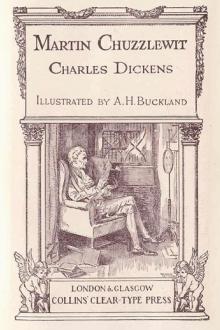Narrative of the Voyage of H.M.S. Rattlesnake, Commanded By the Late Captain Owe - Volume 1, John MacGillivray [read dune txt] 📗

- Author: John MacGillivray
Book online «Narrative of the Voyage of H.M.S. Rattlesnake, Commanded By the Late Captain Owe - Volume 1, John MacGillivray [read dune txt] 📗». Author John MacGillivray
thrown on the beach.
Colour greyish brown; polypidom 4 to five inches high, much branched, branches irregular, divaricate, rising in great numbers almost immediately from the mass of radical fibres. A beautiful species, and the ovarian receptacles very interesting.
7. P. divaricata, n. sp.
Cells cup-shaped, long, slightly contracted at bottom; mouth circular; margin sub-expanded, dentate, with three nearly equal upright teeth on each side, and a long, round pointed central tooth in front. Rostrum narrow at bottom, closely adnate, scarcely rising higher than the central tooth; lateral processes small, closely adnate.
Habitat: Bass Strait, 45 fathoms.
Colour dark brown, almost black when dry. In habit it is extremely like the preceding species, from which, however, it is quite distinct. The polypidom is five or six inches high, perhaps more; stem slender, branches long, divaricate at rightangles, not opposite.
8. P. phoenicea, n. sp.
Cells cup-shaped, rounded, bent over in front, so that the mouth is nearly vertical; margin with two folds, subcrenate, and with a broad, but pointed lateral lobe; entire posteriorly. Rostrum, arising solely from the cell, small, upper half free, projecting, tubular; lateral processes long, cylindrical, or tapering, free, projecting.
Habitat: Prince of Wales Channel, Torres Strait, in 9 fathoms.
Colour bright buff, many of the branches having a piebald aspect, or mottled with dark purple patches; when wetted these portions present a beautiful crimson colour. Polypidom five or six inches high, rising with a strong, tapering, longitudinally grooved stem, which is sometimes sparingly branched, but more commonly simple. Stem and branches pinnate or bipinnate, the pinnae and pinnules alternate. The latter are about 1/4 inch in length.
9. P. longicornis, n. sp.
Cells urceolate, deep, upper half curved abruptly upon the lower, so that the mouth is vertical; margin subplicate, subcrenate, rising on each side into a broad angular lobe, entire behind, and quite free from the rachis. Rostrum, rising entirely from the cell, with a broad base, suddenly contracting into a long slender tube, which projects in front a long way from the cell; lateral processes very long, free, tubular, projecting suddenly forwards and a little upwards and outwards.
Habitat: Prince of Wales Channel, Torres Strait, 9 fathoms.
Colour pale buff. Polypidom five or six inches high, consisting of a strong straight, tapering stem, sometimes with a single ascending branch given off near the bottom; stem and branches pinnate; pinnae 1 1/4 to 1 1/2 inches long; alternate, and arranged with the utmost regularity, of uniform length, till near the summit, when they shorten rapidly, so as to give the polypidom a rounded truncate end. The pinnules are excessively fine and delicate, not more than 1/10 to 1/12 inch long, and very closely set, so that the whole polypidom has the most exact resemblance to a beautiful silky quill feather.
10. P. macgillivrayi, n. sp.
Cells campanulate, deep, rounded at bottom; margin subplicate, entire. Rostrum large, rising from the cell, adnate the whole length of, and as long as, the cell; the upper third constitutes a cup distinct from the lower portion; lateral processes adnate, wide, short, curved upwards, canalicular or tubular. Costae of ovarian receptacle connected by a membranous expansion.
Habitat: Louisiade Archipelago, reefs at low water.
Colour bright brownish buff. Polypidom six to seven inches high, consisting of a strong central stem, giving off opposite branches, at regular intervals, and bifariously disposed. Pinnules about 1/8 inch long, closely set.
b. Gymnocarpeae-ovicells naked.
11. P. effusa, n. sp.
Cells urceolate; deeply emarginate posteriorly, entire in front, ventricose below; a small pedunculate infundibuliform process attached in front to the projecting portion of the rachis on a level with upper border of the cell. Ovicell -- ?
Habitat: Prince of Wales Channel, Torres Strait.
Colour buff. Habit very peculiar. The polypidom rises to a height of seven or eight inches, with a long slender waving, but upright stem, which is naked inferiorly, and above gives off numerous straight or waving branches, again subdividing into other shorter straight ramules, about an inch long. The branches and branchlets are both pinnulated; the pinnules are not more than 1/10 to 1/12 inches long, extremely delicate and minute, so as in the dry state to be scarcely visible. The transition from the former section of the genus Plumularia to the present, is well shown, through P. macgillivrayi and the present species.
12. P. campanula, n. sp.
Cells campanulate, border entire; lateral and anterior appendages canalicular. Branches alternate. Ovicells -- ?
Habitat: Bass Strait, 45 fathoms dead shells.
There appear to be two varieties of this species, or that different portions of the same polypidom may assume very different characters. The larger and probably more common form, is at first sight extremely like P. catharina, but it will soon be noticed that the branches are alternate instead of opposite. The shape of the cells and their average size is precisely the same as in that species. The lateral and anterior appendages differ in form very considerably. In P. catharina these organs are longer, more slender, infundibuliform, whilst in P. campanula they are shorter and thicker and the terminal cup is open on one side or canalicular. The ovicells might perhaps afford a more striking characteristic, but they are unfortunately wanting in all the specimens of P. campanula. The second variety is much slenderer, unbranched, the cells and their appendages smaller but of the same form, and the cells usually contain a mass of opaque black matter. This species is parasitic, and appears to attain a height of several inches.
Fam. 4. CAMPANULARIADAE.
4. CAMPANULARIA, Lamarck.
1. C. volubilis (?) Ellis.
Habitat: Prince of Wales Channel, Torres Strait.
As one or two ovicells, parasitic upon Sertularia pristis, are the only evidences of this species that have come under observation, some doubt as to identity of the species with the British form may be entertained.
1. C. dumosa, Pallas.
Habitat: Bass Strait.
Parasitic upon Sertulariae. Rather more slender than the usual British form, but otherwise identical.
5. LAOMEDEA, Lamouroux.
1. Laomedea torressii, n. sp.
Cells campanulate, nearly sessile upon an incrassated collar projecting from the stem. Margin of mouth not thickened, with four shallow excavations.
Habitat: Prince of Wales Channel, Torres Strait.
Of a light brown colour, two or three inches high. At first sight it is very like Laomedea antipathes, Lamouroux, which occurs in New Zealand, but differs materially in its smaller size and in the four shallow emarginations of the mouth, which part in L. antipathes is entire and with the margin a little thickened.
Note. Circumstances having prevented the insertion here of descriptions of new species of Lunulites (Table 1 figures 13 to 16) and a few other Zoophytes of the Voyage of the Rattlesnake-examined by Mr. Busk subsequently to the preceding paper having been placed in the printer's hands-I may mention that the descriptions in question will shortly be published elsewhere. J. MCG.
Imprint
Colour greyish brown; polypidom 4 to five inches high, much branched, branches irregular, divaricate, rising in great numbers almost immediately from the mass of radical fibres. A beautiful species, and the ovarian receptacles very interesting.
7. P. divaricata, n. sp.
Cells cup-shaped, long, slightly contracted at bottom; mouth circular; margin sub-expanded, dentate, with three nearly equal upright teeth on each side, and a long, round pointed central tooth in front. Rostrum narrow at bottom, closely adnate, scarcely rising higher than the central tooth; lateral processes small, closely adnate.
Habitat: Bass Strait, 45 fathoms.
Colour dark brown, almost black when dry. In habit it is extremely like the preceding species, from which, however, it is quite distinct. The polypidom is five or six inches high, perhaps more; stem slender, branches long, divaricate at rightangles, not opposite.
8. P. phoenicea, n. sp.
Cells cup-shaped, rounded, bent over in front, so that the mouth is nearly vertical; margin with two folds, subcrenate, and with a broad, but pointed lateral lobe; entire posteriorly. Rostrum, arising solely from the cell, small, upper half free, projecting, tubular; lateral processes long, cylindrical, or tapering, free, projecting.
Habitat: Prince of Wales Channel, Torres Strait, in 9 fathoms.
Colour bright buff, many of the branches having a piebald aspect, or mottled with dark purple patches; when wetted these portions present a beautiful crimson colour. Polypidom five or six inches high, rising with a strong, tapering, longitudinally grooved stem, which is sometimes sparingly branched, but more commonly simple. Stem and branches pinnate or bipinnate, the pinnae and pinnules alternate. The latter are about 1/4 inch in length.
9. P. longicornis, n. sp.
Cells urceolate, deep, upper half curved abruptly upon the lower, so that the mouth is vertical; margin subplicate, subcrenate, rising on each side into a broad angular lobe, entire behind, and quite free from the rachis. Rostrum, rising entirely from the cell, with a broad base, suddenly contracting into a long slender tube, which projects in front a long way from the cell; lateral processes very long, free, tubular, projecting suddenly forwards and a little upwards and outwards.
Habitat: Prince of Wales Channel, Torres Strait, 9 fathoms.
Colour pale buff. Polypidom five or six inches high, consisting of a strong straight, tapering stem, sometimes with a single ascending branch given off near the bottom; stem and branches pinnate; pinnae 1 1/4 to 1 1/2 inches long; alternate, and arranged with the utmost regularity, of uniform length, till near the summit, when they shorten rapidly, so as to give the polypidom a rounded truncate end. The pinnules are excessively fine and delicate, not more than 1/10 to 1/12 inch long, and very closely set, so that the whole polypidom has the most exact resemblance to a beautiful silky quill feather.
10. P. macgillivrayi, n. sp.
Cells campanulate, deep, rounded at bottom; margin subplicate, entire. Rostrum large, rising from the cell, adnate the whole length of, and as long as, the cell; the upper third constitutes a cup distinct from the lower portion; lateral processes adnate, wide, short, curved upwards, canalicular or tubular. Costae of ovarian receptacle connected by a membranous expansion.
Habitat: Louisiade Archipelago, reefs at low water.
Colour bright brownish buff. Polypidom six to seven inches high, consisting of a strong central stem, giving off opposite branches, at regular intervals, and bifariously disposed. Pinnules about 1/8 inch long, closely set.
b. Gymnocarpeae-ovicells naked.
11. P. effusa, n. sp.
Cells urceolate; deeply emarginate posteriorly, entire in front, ventricose below; a small pedunculate infundibuliform process attached in front to the projecting portion of the rachis on a level with upper border of the cell. Ovicell -- ?
Habitat: Prince of Wales Channel, Torres Strait.
Colour buff. Habit very peculiar. The polypidom rises to a height of seven or eight inches, with a long slender waving, but upright stem, which is naked inferiorly, and above gives off numerous straight or waving branches, again subdividing into other shorter straight ramules, about an inch long. The branches and branchlets are both pinnulated; the pinnules are not more than 1/10 to 1/12 inches long, extremely delicate and minute, so as in the dry state to be scarcely visible. The transition from the former section of the genus Plumularia to the present, is well shown, through P. macgillivrayi and the present species.
12. P. campanula, n. sp.
Cells campanulate, border entire; lateral and anterior appendages canalicular. Branches alternate. Ovicells -- ?
Habitat: Bass Strait, 45 fathoms dead shells.
There appear to be two varieties of this species, or that different portions of the same polypidom may assume very different characters. The larger and probably more common form, is at first sight extremely like P. catharina, but it will soon be noticed that the branches are alternate instead of opposite. The shape of the cells and their average size is precisely the same as in that species. The lateral and anterior appendages differ in form very considerably. In P. catharina these organs are longer, more slender, infundibuliform, whilst in P. campanula they are shorter and thicker and the terminal cup is open on one side or canalicular. The ovicells might perhaps afford a more striking characteristic, but they are unfortunately wanting in all the specimens of P. campanula. The second variety is much slenderer, unbranched, the cells and their appendages smaller but of the same form, and the cells usually contain a mass of opaque black matter. This species is parasitic, and appears to attain a height of several inches.
Fam. 4. CAMPANULARIADAE.
4. CAMPANULARIA, Lamarck.
1. C. volubilis (?) Ellis.
Habitat: Prince of Wales Channel, Torres Strait.
As one or two ovicells, parasitic upon Sertularia pristis, are the only evidences of this species that have come under observation, some doubt as to identity of the species with the British form may be entertained.
1. C. dumosa, Pallas.
Habitat: Bass Strait.
Parasitic upon Sertulariae. Rather more slender than the usual British form, but otherwise identical.
5. LAOMEDEA, Lamouroux.
1. Laomedea torressii, n. sp.
Cells campanulate, nearly sessile upon an incrassated collar projecting from the stem. Margin of mouth not thickened, with four shallow excavations.
Habitat: Prince of Wales Channel, Torres Strait.
Of a light brown colour, two or three inches high. At first sight it is very like Laomedea antipathes, Lamouroux, which occurs in New Zealand, but differs materially in its smaller size and in the four shallow emarginations of the mouth, which part in L. antipathes is entire and with the margin a little thickened.
Note. Circumstances having prevented the insertion here of descriptions of new species of Lunulites (Table 1 figures 13 to 16) and a few other Zoophytes of the Voyage of the Rattlesnake-examined by Mr. Busk subsequently to the preceding paper having been placed in the printer's hands-I may mention that the descriptions in question will shortly be published elsewhere. J. MCG.
Imprint
Publication Date: 05-21-2008
All Rights Reserved
Free e-book «Narrative of the Voyage of H.M.S. Rattlesnake, Commanded By the Late Captain Owe - Volume 1, John MacGillivray [read dune txt] 📗» - read online now
Similar e-books:





Comments (0)